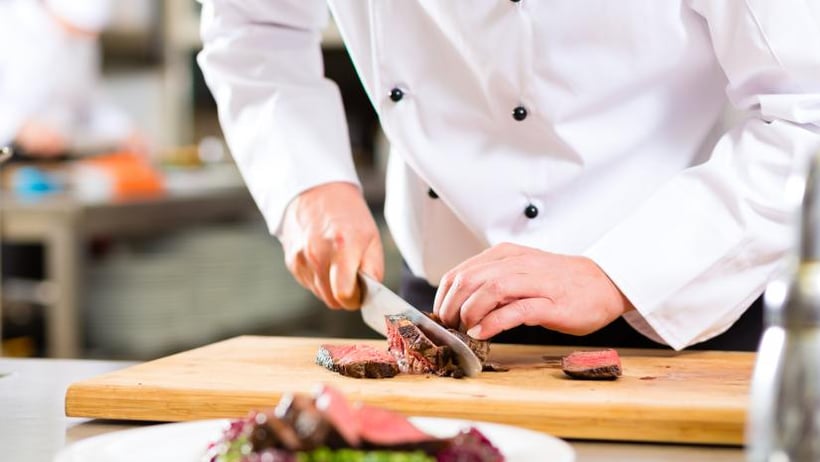
Chopping boards are a staple equipment in almost every kitchen, whether commercial, like in a restaurant or bakery, or residentially. Like any piece of equipment used for food preparation, the chopping board could pose a food safety risk, depending on the type being use and how it is being used by a Food Handler.
Whether preparing food in a commercial kitchen or at home, it’s important to ensure one is taking proper food safety precautions to prevent contamination. Food contamination occurs when a food is affected or spoiled by another substance. There are four main types of contamination: biological (when a food is spoiled by a living organism or the substances they produce), physical (when an object gets into the food), chemical (when a chemical agent such as kitchen cleaner contaminates the food), and cross-contamination (when food or bacteria spreads from foods, hands or surfaces to other foods).
Food preparation surfaces, like chopping boards, pose a cross-contamination risk. That is, they can easily harbour kitchen bacteria and germs from the food being prepared, that can then spread to one’s hands or to other foods prepared on the same surface.
High-risk foods such as raw poultry, fish and meat can contain bacteria and viruses like Salmonella and E.coli – some of the most common causes of food-borne illness. If a cutting board isn’t properly cleaned after preparing such food and then additional food is prepared, there is a risk of spreading those germs. As such, it is essential for food handlers to understand how to best banish bacteria from their kitchen.
Find out more about high-risk foods in our related blog.
Tips for Chopping Board Safety
When using a chopping board to prepare food, follow these steps to ensure safe food handling:
- Don’t prepare ready-to-eat foods on boards used to prepare raw meat
- Use rubber or hard acrylic boards instead of wooden options (wood is more likely to absorb materials)
- Purchase and use different boards for different jobs – such as a red board for raw meat, green for fresh produce, and blue for raw fish
- Dispose of chopping boards that are scratched and cracked, as bacteria can easily hide within the grooves of old boards
- Clean all chopping boards with hot soapy water each and every time that you use them, and especially between preparation of different foods if you’re not using various boards (e.g. after raw chicken, before fresh vegetables)
- Sanitize all chopping boards before putting them away – either with steam or chemical sanitizer
- Try to leave boards to dry naturally after washing, or use paper towels. Tea towels are particularly dangerous when it comes to cross-contamination within the kitchen and need to be regularly washed and replaced.
Food safety training is the best way to ensure you're handling food correctly and safely. For more about food safety training, including more about how to prevent contamination, check out our course page. Don't forget to read up on other sources of contamination in the kitchen, including how to prevent contamination in the refrigerator.





